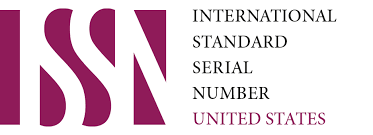The Effect of Native Language (Arabic Language) on Learning English Language
Keywords:
Arabic sound system, Communication, Contrastive analysis, English sound systemAbstract
The major goal of this contrastive analysis study was to describe the impact of the Arabic sound system on learning English pronunciation. To this end, this study analyzed the sound systems of Arabic and English in detail to find out similarities and differences. As the analysis revealed, there are similarities and differences between the Arabic and English sound systems mainly in terms of the number of vowels and consonants, diphthongs, syllable structure, and intonation. In some cases, such as Arabic consonants that are absent in English, it was found that differences helped learners master English pronunciation. However, there were also a few cases in which irregularities could cause problems for learners.
References
Abdelhakim, B., & Elasri, Kh. (2019). A contrastive analysis of conditionals in English and Moroccan Arabic: Potential problems when learning English conditionals by Moroccan EFL learners. Macrolinguistics, 7, 110-135.
Al-Ahdal, A. A. M. H. (2020). Code Mixing in Arabic conversations of college students: A Sociolinguistic study of attitudes to switching to English. Asian ESP Journal, 16(1), 6-19.
Al-Jarf, R. (2022). Challenges that undergraduate student translators’ face in translating polysemes from English to Arabic and Arabic to English. International Journal of Linguistics, Literature and Translation (IJLLT), 5(7), 84-97.
Al-Manie, M. A., Alkanhal, M. I., & Al-Ghamdi, M. M. (2010). Arabic speech segmentation: Automatic verses manual method and zero crossing measurements. Indian Journal of Science and Technology, 3(12), 1134-1138.
Anwar, M. J., Awais, M. M., Masud, S., & Shamail, S. (2006). Automatic Arabic speech segmentation system. International Journal of Information Technology, 12(6), 102-111.
Al-Zoubi, D. S. M. (2019). The speech sounds of Arabic language and their effect on learning English pronunciation: A contrastive analysis. International Journal of Humanities and Social Science, 9(1), 15-27.
Avery, P., & Ehrlich, S. (1992). Teaching American English pronunciation. Oxford University Press.
Aziz, Y.Y. (1974). Some problems of the English consonant sounds of Iraqi learners. EFL
Journal, 28(1). Downloaded from http://eltj.oxfordjournals.org/ at University of Leicester on November 12, 2013
Chouchane, A. (2016). Pronunciation difficulties for Arab learners of English. Global English-Oriented Research Journal (GEORJ), 2(2), 205-2015.
Collins, B., & Mees, M. L, (2003) Practical phonetics and phonology. Routledge.
Cruttenden, A. (2008). Gimson’s pronunciation of English. Oxford University Press.
Elaish, M. M., Ghani, N. A., Shuib, L., & Al-Haiqi, A. (2019). Development of a mobile game application to boost students’ motivation in learning English vocabulary. IEEE Access, 7, 13326-13337.
El-Omari, A. H., & Bataineh, H. M. (2018). Problems of learning Arabic by non-Arabic speaking children: Diagnosis and treatment. Journal of Language Teaching and Research, 9(5), 1095-1100.
Kennworthy, J. (1987). Teaching English pronunciation. Longman Group UK Limited.
O’Connor, J. D. (1980). Better English pronunciation. Cambridge University Press.
Richards, J., Blatt, J. & Weber, H. (1985). Longman dictionary of Applied Linguistics. Longman Group.
Rogerson-Revell, P. (2011), English Phonology and Pronunciation Teaching. Continuum Press.
Shyamlee, S. D., & Phil, M. (2012). Use of technology in English language teaching and learning: An analysis. In International Conference on Language, Medias and Culture, 33(1), 150-156.
Wofford, M. C., & Tibi, S. (2018). A human right to literacy education: Implications for serving Syrian refugee children. International journal of speech-language pathology, 20(1), 182-190.
Downloads
Published
Issue
Section
License

This work is licensed under a Creative Commons Attribution-NonCommercial 4.0 International License.
User Rights
Under the Creative Commons Attribution-NonCommercial 4.0 International (CC-BY-NC), the author (s) and users are free to share (copy, distribute and transmit the contribution).
Rights of Authors
Authors retain the following rights:
1. Copyright and other proprietary rights relating to the article, such as patent rights,
2. the right to use the substance of the article in future works, including lectures and books,
3. the right to reproduce the article for own purposes, provided the copies are not offered for sale,
4. the right to self-archive the article.













